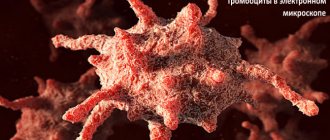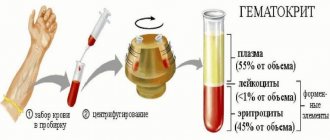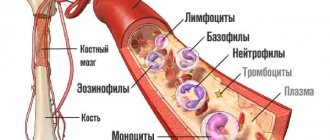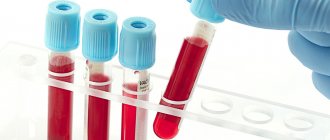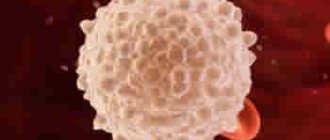Prothrombin time: what is it?
The human body has the ability to recover. When various injuries occur and bleeding occurs, the process of blood clotting begins, which results in the formation of blood clots. These are a kind of “patches” that close gaps in blood vessels.
Prothrombin time (PTT) is a laboratory indicator that is used to determine the external pathway of blood coagulation, that is, the time during which a blood clot forms and bleeding stops.
Indications for the purpose of analysis are:
- liver diseases (cirrhosis, hepatitis);
- determining the effectiveness of treatment with certain drugs, adjusting the doses used;
- diagnosis of diseases associated with the formation of blood clots;
- severe bleeding;
- examination before and after surgery;
- diagnosis of chronic anemia;
- suspicion of hidden bleeding.
An analysis to determine prothrombin time may prescribe:
- therapist;
- surgeon;
- pediatrician;
- cardiologist;
- traumatologist;
- anesthesiologist-resuscitator;
- pulmonologist
Blood INR: what kind of test is it and what its results can tell you
Perhaps almost all people have an idea of what blood clotting is. But when it comes time to get tested, you can easily get confused in the variety of clotting tests. What do you need as a result: take an INR or PTI test, determine fibrinogen, prothrombin or APTT? Today we will talk in detail about one of the most universal indicators: blood INR.
Blood test for INR: what is it?
The human body is capable of self-defense and self-healing. When bleeding occurs, the blood clotting process starts, resulting in the formation of blood clots. They serve as a kind of “patches” for ruptures in the vessels.
Previously, only prothrombin time (PTT) was assessed to determine coagulation. PTT is the time period during which the process of formation of fibrin threads occurs, transforming into a blood clot that stops bleeding. At the same time, different laboratories used different thromboplastins - special reagents that trigger blood clotting - from several manufacturers. Therefore, the results of determining PTT in different laboratories could differ slightly.
In order not to be tied to the standards of a particular laboratory, the INR indicator was introduced - “international normalized ratio”.
In fact, this is not an analysis, but a calculation of an indicator based on a mathematically calculated formula. Figures and facts A standardized test for determining blood INR was adopted by the International Committee for Standardization in Hematology and the International Committee on Thrombosis and Hemostasis in 1983.
The INR is calculated using a special formula taking into account the patient’s prothrombin time and a special IHR coefficient, or the international thromboplastin reagent sensitivity index. According to the recommendations of the World Health Organization, the manufacturer determines the MIC for each series of reagents by comparing it with a certain reference index.
INR = (patient PT/control PT) MIHR
Where PT of control is an indicator of PT of capillary blood of a healthy person.
The use of INR allows comparison of results obtained in different laboratories at different times. This is a standard indicator for all doctors and even for all countries. It is the result of the INR analysis that is the basis for selecting the dose of anticoagulants, for plasma transfusion, prescribing other drugs and for determining further treatment tactics.
Indications for the purpose of analysis
Most often, blood INR is used together with other indicators to assess various stages of blood coagulation. This study is carried out to diagnose diseases associated with the formation of blood clots or, conversely, severe bleeding. But most often, an analysis to determine the INR is prescribed to people taking anticoagulants to control the dose of the drug.
Another indication is severe liver disease such as cirrhosis or hepatitis. Since it is the liver that is responsible for the production of many factors that affect blood clotting.
For people who take indirect coagulants (most often warfarin-based drugs), INR determinations are carried out regularly. It is on the basis of this indicator that the doctor adjusts the dose of anticoagulants and assesses the patient’s condition. Most dosage recommendations for these drugs are based on INR values and are consistent across countries.
Preparation for the study and blood sampling procedure for calculating INR
You should not donate blood for analysis after physical therapy, heavy physical exertion, after a massage, injections or intravenous infusions. All this can distort the results obtained.
When taking anticoagulants before donating blood to determine the INR, the entire daily dose of the drug should be taken at approximately 16-17 pm on the evening before the test.
For research, biomaterial is taken from a peripheral vein, as in conventional analysis. Blood for INR testing is taken on an empty stomach, at least 8 hours after eating. But you shouldn’t fast for more than 14 hours before the test.
Already in a test tube, the blood is mixed with a preservative (citrate), the plasma is separated from the cell sediment, and pure serum is used for further research. Citrate binds calcium ions and prevents blood from clotting.
In the laboratory, calcium is added to the plasma to neutralize the preservative, thromboplastin is added, and the time it takes for pure plasma to clot is assessed. This is prothrombin time. After all the tests have been carried out, the INR is calculated.
Note: Some laboratories use more modern methods for assessing coagulation - determining prothrombin time according to Quick. In this case, several dilutions of the patient's plasma are indicated.
The entire procedure takes on average 1 business day. If the result is needed urgently, some laboratories can provide it within 1–2 hours, but for an additional fee.
When treated with indirect coagulants, the patient needs to have an INR test for blood clotting once every 2-3 weeks. After the doctor selects the appropriate dose of drugs for the patient, the test can be performed less frequently, approximately once every 6-8 weeks.
What the INR shows: norms and reasons for deviation
INR is measured in units and is inversely proportional to plasma clotting time. That is, the higher the INR, the less prothrombin and clotting factors in the plasma. Conversely, the INR decreases if the amount of prothrombin increases.
Normal INR values for a healthy person are from 0.85 to 1.15 units. For patients who take indirect anticoagulants, the norms are different, on the order of 2.0–3.0 units. Medicines interfere with the process of blood clotting, which makes it more “liquid” and prevents the formation of blood clots.
The reason for an increase in INR and a decrease in prothrombin levels may be:
- liver diseases;
- consumption coagulopathy, when due to the active formation of blood clots, the coagulation of all blood is impaired;
- fibrinogen or prothrombin deficiency;
- vitamin K deficiency;
- taking certain medications.
A decrease in INR level below 0.5 units may indicate a risk of blood clots. This is typical for the initial stage of thrombosis, when a critical amount of unused coagulation factors has accumulated. Also, INR often decreases in late pregnancy.
Price for analysis
The cost of a blood test with calculation of the INR depends on the quality of reagents, consumables, and the pricing policy of the laboratory.
In most modern clinics and laboratories, blood is collected for analysis in sterile vacuum-containing tubes with a preservative already prepared. They are a little more expensive than regular reusable glass tubes, but the results of the study are more accurate.
On average, in Moscow laboratory centers, a blood test for prothrombin and INR costs 210–330 rubles, plus 120–160 rubles will have to be paid for drawing blood from a vein. If the test is needed quickly, most clinics can do it “cito” (urgently) within 2-6 hours. But at the same time, the cost of the analysis itself doubles.
How is the indicator set?
Blood to determine PTT is donated from a vein, strictly on an empty stomach. It is drawn into a test tube along with sodium citrate, which binds calcium in the blood sample. After this, the blood is carefully mixed in a test tube and placed in a special laboratory centrifuge, which separates the blood cells from the plasma. It is plasma that is most often used to determine prothrombin time. However, in newborns, whole blood is used for analysis.
After receiving plasma, the PTT is automatically set at 37 C. To neutralize the effect of citrate, excess calcium is added to the sample. This restores the plasma's ability to clot. Next, tissue factor is added to the plasma with calcium (it is obtained from animal tissues, it consists of apoprotein protein and a phospholipid complex). After this, the time until a clot forms is measured. This will be the PTV indicator.
Decoding the norm
In order to diagnose blood clotting disorders, the prothrombin time indicator, expressed in seconds, is used. The normal value is 11-16 seconds.
For INR the indicator is 0.85 -1.35 units. This is a standard indicator for all doctors around the world. It is the results of this analysis that are the basis for choosing treatment tactics, prescribing medications and plasma transfusions.
Attention: the prothrombin rate according to Quick is 70-120%.
In some cases, analysis results may be distorted. There are a number of reasons for this:
- age of the patient (in newborns the rate is increased);
- violation of the rules for preparing for the test;
- taking interfering drugs;
- violations during blood collection, improper transportation and storage;
- menstruation;
- recent injuries (fractures, burns, surgeries).
Reasons for deviations from the norm
In a healthy person, the PTT value should always be within the normal range. An increase or decrease in prothrombin time may indicate serious illness.
Promoted
With an increased PTT value, the activity of prothrombin (a blood plasma protein important in coagulation) decreases. Inflated indicators may indicate the presence of various diseases and disorders in the patient’s body:
- acute DIC syndrome;
- increased levels of heparin in the blood;
- various liver diseases;
- use of indirect anticoagulants (warfarin);
- vitamin K deficiency in the body;
- acute and chronic leukemia;
- intestinal dysbacteriosis;
- chronic pancreatitis;
- pancreatic and gallbladder cancer;
- nephrotic syndrome.
In what cases is PTV analysis needed, the norm and reasons for deviations?
The PTT indicator is not determined by a routine general blood test. The doctor gives a referral for this study in the following cases:
- with increased bleeding;
- during anticoagulant therapy to check the effectiveness of treatment;
- if thrombosis of any vessel is diagnosed due to myocardial infarction, pulmonary embolism, deep vessel thrombosis, etc.;
- if you need to evaluate the process of blood clotting in combination with other tests - aPTT (activated partial thromboplastin time), INR (international normalized ratio), fibrinogen, prothrombin index;
- with serious liver pathologies;
- when a congenital or acquired deficiency of a particular blood clotting factor is suspected;
- for diagnosing DIC syndrome (disseminated intravascular coagulation ), as well as during its treatment.
In an adult, if he is healthy, the prothrombin time ranges from 11 to 16 seconds.
This indicator is necessary if it is necessary to establish INR and PTI (prothrombin index) before any surgical intervention:
- If the PTT decreases, then the INR also decreases, and the coagulation time is reduced - that is, a blood clot quickly forms.
- If the PTT is higher than normal, then the INR also increases, and blood clots do not form - there is a risk of extensive bleeding.
The following factors can affect PTV indicators:
- Therapy with Xarelto, Clexane, Prodaxa - the prothrombin time is prolonged.
- Some foods are liver, beans, fresh herbs, all varieties of cabbage, especially broccoli, alcoholic drinks, green teas. In this case, the PTV is reduced.
- Hormonal contraceptives, barbiturates, vitamin K, Allopurinol, antibiotics and some types of steroids, fever, drugs used in the treatment of diabetes.
PTT can change in various diseases - liver damage, hemorrhagic diathesis in newborns, DIC syndrome, thromboembolism. This indicator is also affected by blood transfusion.
Indicators during pregnancy
Pregnant women are a group of patients who should pay special attention to analysis for changes in prothrombin time. This is one of the important diagnostic methods, indications for which arise in the following cases:
- the expectant mother has a history of frozen pregnancies, miscarriages, spontaneous abortions;
- various health-threatening conditions, including uterine hypertonicity;
- signs of gestosis in a woman at any stage of pregnancy.
Important: during pregnancy, the activity of the blood coagulation system generally increases. The fibrinogen content also increases, and, consequently, the prothrombin time lengthens. The normal PTT value during pregnancy is 11-18 seconds.
If this indicator is elevated, then bleeding is possible during the labor and postpartum periods. In cases where prothrombin time is reduced, there is a risk of developing disseminated intravascular coagulation syndrome.
The PTT test allows you to determine how long it will take for the blood to clot and the bleeding to stop. It is mandatory to establish this indicator for people who are preparing for surgery, pregnant women and those who take indirect anticoagulants. Prothrombin time also indicates liver disease, vitamin K deficiency in the body and malignant tumors.
Excessive clotting time
Blood clotting time may be higher than normal (longer) with the following pathologies:
- Liver diseases. It is in the liver cells that prothrombin is formed, and if the liver does not function properly, there is a lack of it in the blood.
- Low vitamin K content. This microelement is necessary for the synthesis of prothrombin and with its deficiency, protein cannot be synthesized in the required volume.
- DIC syndrome.
- Increased antithrombin content (factor III). The third factor is responsible for blocking thrombin. This is necessary to prevent blood clots from forming in the vessels. The increased content of this substance blocks the formation of a blood clot when a vessel is damaged.
- Increased reaction of thrombin dissolution in the blood. This mechanism is responsible for the resorption of the blood clot after it has completed its function.
- Pancreas cancer.
- Blood pathologies.
- Increased red blood cell count.
- Hemophilia.
- Pregnancy. The norm in women may decrease during pregnancy. This occurs in the first and second trimester due to a lack of vitamins in the blood of women. If these abnormalities are observed in the third trimester, this condition must be corrected to avoid severe blood loss during childbirth.
